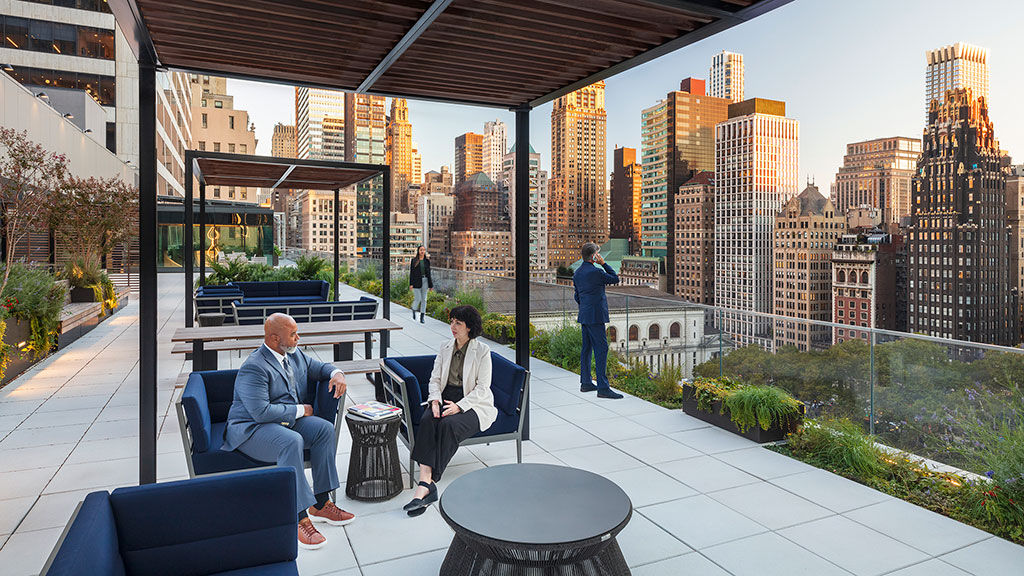The Pandemic Hit New York Hard — But Its Recovery Has Been Swift
June 05, 2024 | By Sofia Song, Stella Donovan, and Jacqueline Scherr
Gensler’s latest cities research, “The Return of the City: A 2024 Retrospective of the City Pulse,” presents a closer look at six different cities around the world: Austin, London, Mexico City, New York, San Francisco, and Singapore. We pulled these cities from the headlines to learn deeper lessons about how they navigated the public health crisis and understand what the future may hold. This blog explores New York City, one of the original four cities profiled in Gensler’s City Pulse study.
From America’s perspective, New York was the epicenter of the pandemic. A year after confirming the first case of COVID-19, more than 30,000 New Yorkers had died and close to 800,000 had been infected. The population decreased by 460,000 as people fled the city. Nightclubs, concert venues, and theaters were struggling, taking away prime attractions for visitors. Nearly 200 of the city’s 700 hotels closed. And Broadway’s theaters shuttered for 18 months.
After two years of recovery, the city is reinvigorated. In January 2024, almost 70% of Manhattan workers were at their offices on a typical weekday. Even better, jobs returned to full strength — and then some — as the city set a new record of 4.7 million jobs. “Some speculated that the pandemic would mean the end of New York City,” said Amanda Carroll, co-managing director of Gensler New York. “But there’s a power in the city you can’t replicate. It’s built on a culture of excellence.”
More people say New York offers a great experience.
More than two thirds (65%) of New Yorkers are satisfied with their current living situation, a number that’s remained stable since 2021. But more people think the city offers a great experience (78% today vs. 75% in 2021). However, 57% of respondents feel that the city is too noisy, a number that’s remained stable since 2021.
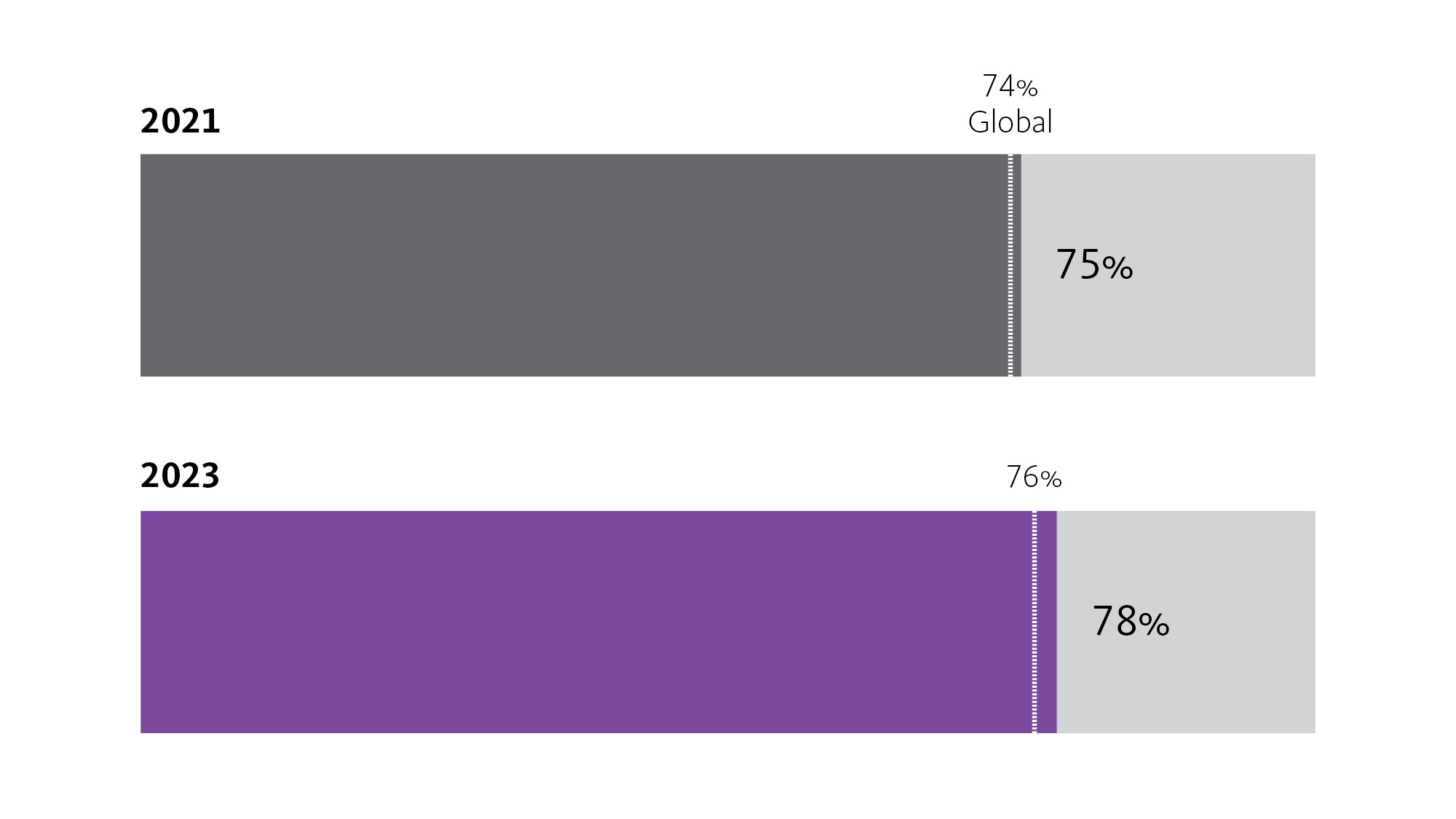
A growing percentage cite improvements in career prospects and job opportunities.
A growing percentage of New Yorkers feel that their own career advancement (30% today vs. 22% in 2021) and citywide employment opportunities (36% today vs. 33% in 2021) have improved. But the ability to work remotely seems to have less of an influence on move intentions than it did in 2021. There’s a 4% decrease in the desire to move to a different part of the city as a result of remote work (45% today vs. 49% in 2021), and a 9% decrease in the desire to leave the city entirely (38% today vs. 47% in 2021). A solid 69% of respondents are satisfied with the city as a place to work.
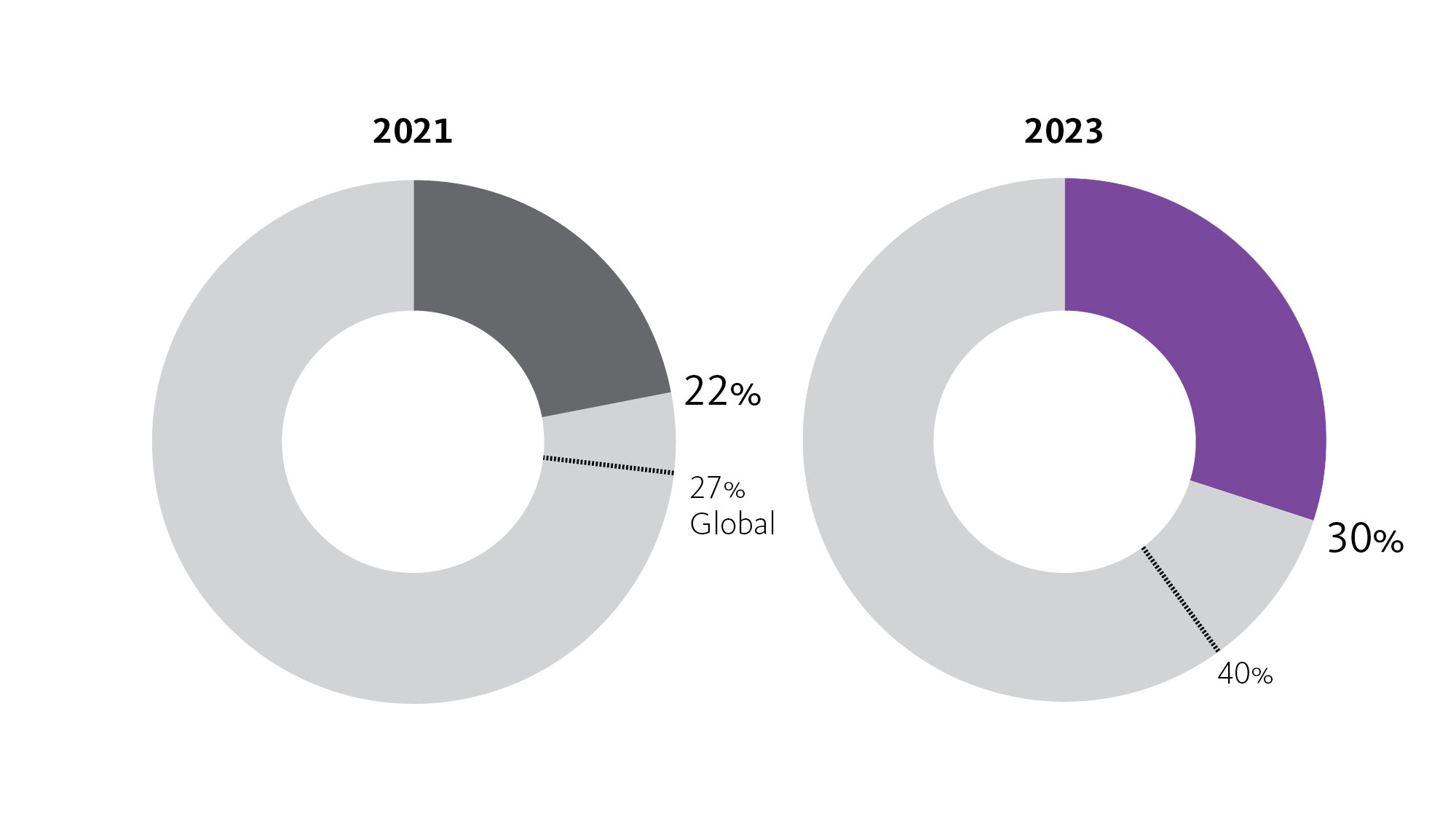
More New Yorkers say they are living paycheck to paycheck.
Nearly half (46%) of New York respondents say that they are living paycheck to paycheck (compared to 41% in 2021). Additionally, 62% say that living in their neighborhood is not as affordable compared to a year ago (an increase of 6% from 2021). Both numbers align with the global averages for these questions.
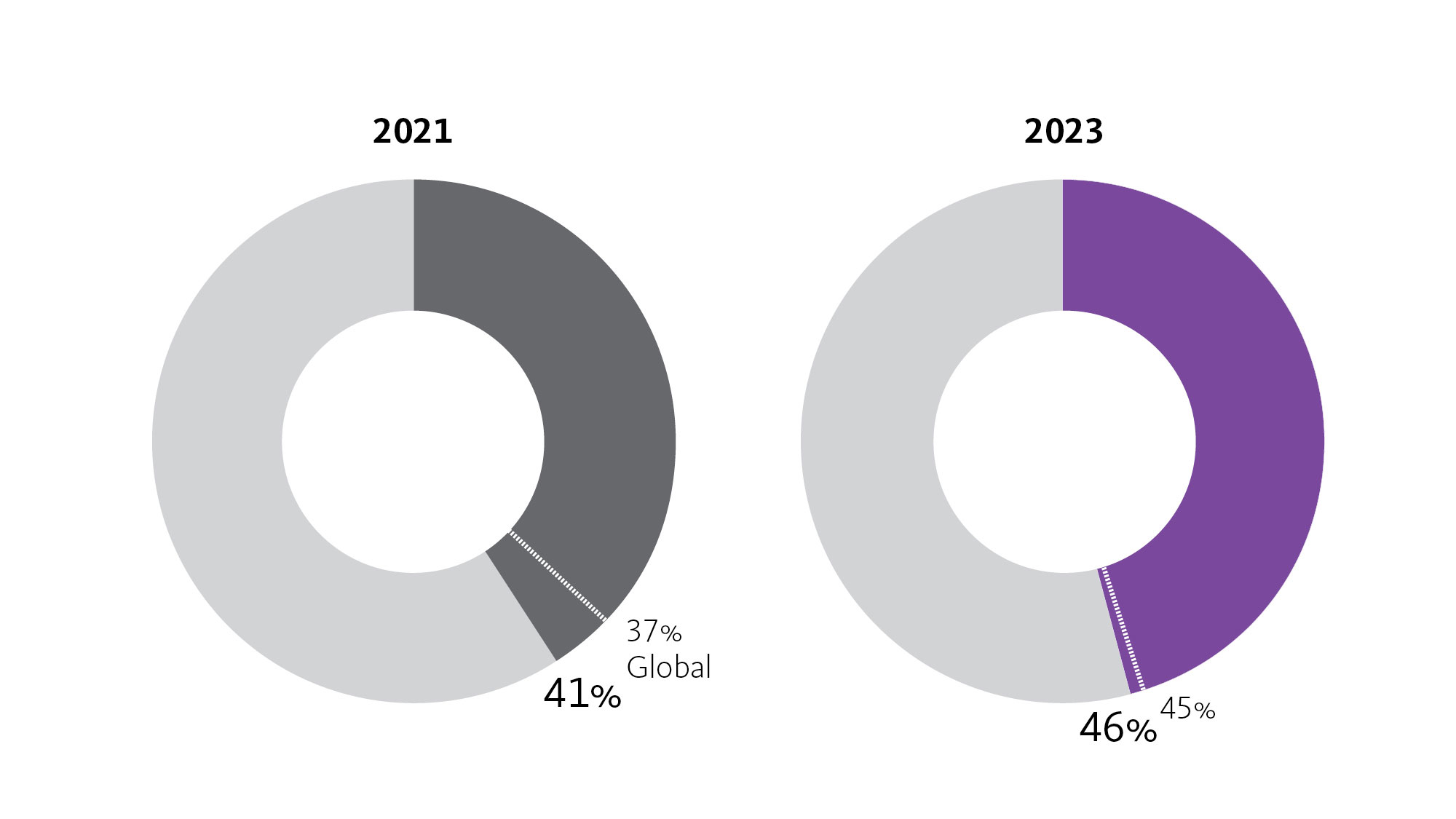
New Yorkers are more enthusiastic about Midtown Manhattan and Lower Manhattan as a backdrop for urban life.
Compared to 2021, the people of New York feel more positively now about Midtown Manhattan and Lower Manhattan as places to enjoy the full spectrum of activities we asked about. The physical improvements that people most desire are reducing traffic congestion (44%), adding more green space (35%), and improving walkability (35%). And 78% of respondents think Midtown Manhattan and Lower Manhattan provide a great experience — a response that’s the same as 2021.
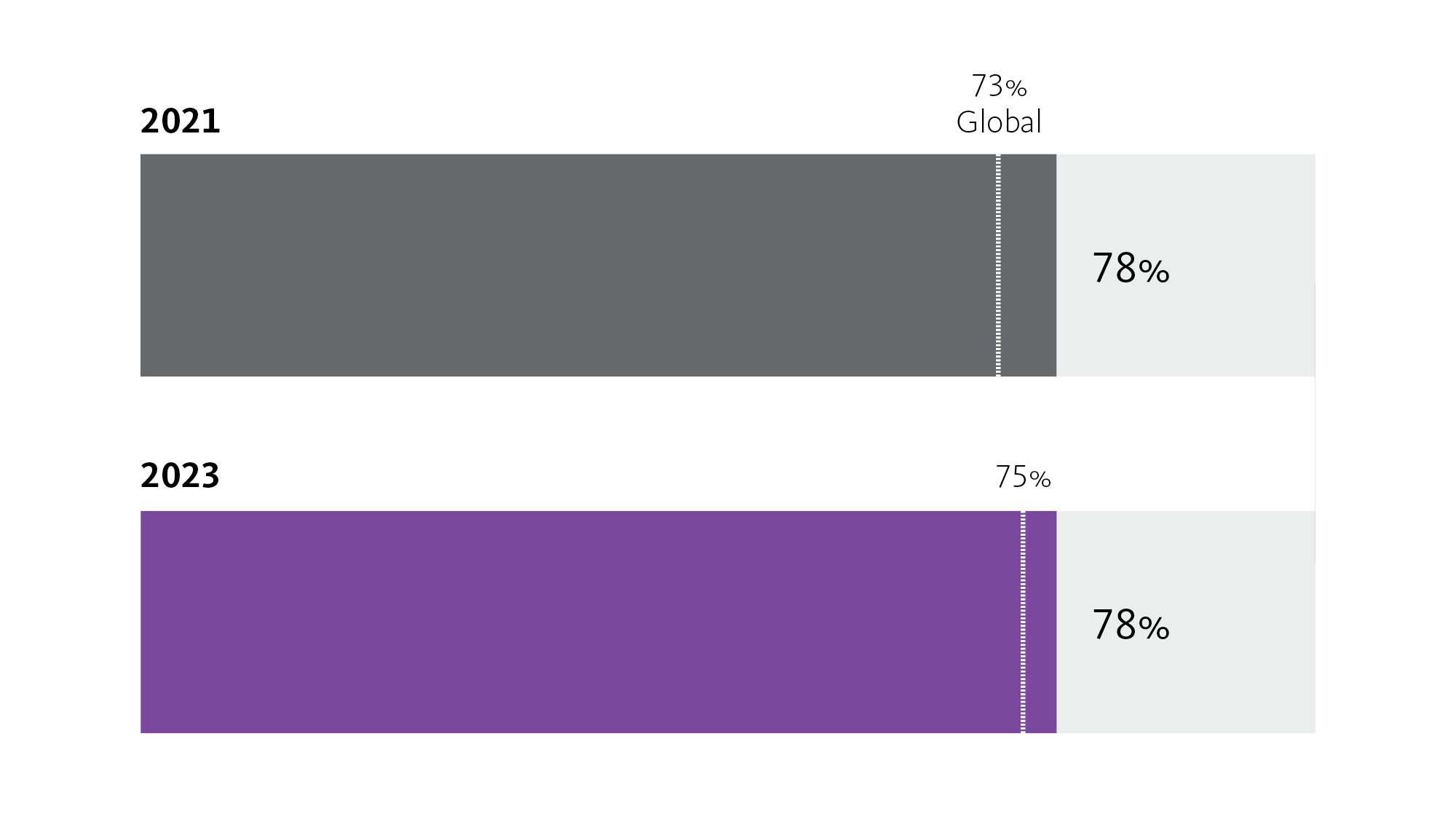
Despite facing significant challenges, New York City’s remarkable economic recovery showcases its resilience and durability in the face of disruption.
Although the pandemic lingered, the city’s economy recovered steadily. By early 2023, New York City had regained nearly all its lost jobs. The retail, dining, and hospitality sectors improved. Apartments remained in high demand, with record-high sales. By December 2023, office occupancy was only 19% lower than pre-pandemic levels, putting New York ahead of all other major U.S. cities.
“New York City is a city that belongs to the world,” said Carlos M. Martínez Flórez, co-managing director of Gensler New York. “It’s an incredible symbol of the modern era.”
For media inquiries, email .
